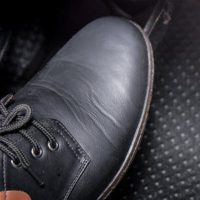Avoiding Accidents: Do You Swerve or Hit the Brakes?

Sometimes driving can be dangerous. There may be hazards in the roadway. Maybe there’s a vehicle partially in your lane. Or a deer in the road. Maybe a truck dropped a box in the road. Or perhaps there is a pothole.
These things can come upon you quickly and you may not have time to react. What is the best course of action? Do you swerve and try to avoid the object? Or do you hit your brakes and hope for the best?
The truth is that the answer is not cut and dry. Sometimes it is better to brake. In other cases, swerving may be better. The safest strategy will depend on various factors, such as your driving skill, road conditions, traffic volume, and speed. However, you should never do both at the same time. This can lead to skidding, which is also dangerous.
Swerving
Drivers are often urged to avoid swerving whenever possible. That’s because there is a high risk of swerving to avoid one obstacle and then hitting something else in the process. However, swerving is a critical defensive driving technique and can be learned and used safely.
It should be used in the following situations:
- If it’s safe to do so, try to swerve around potholes, as they can cause major damage to your tires.
- Electrical wires. Live wires are dangerous, so swerving to avoid touching them can be the safest solution.
- Fallen trees. If there’s room to go around them, do it, but be mindful of other vehicles and hidden obstacles.
- Animals in the road. This will depend on the animal’s size. If it’s a small animal, try braking. However, you will want to avoid hitting a large animal, such as a deer, as it could seriously damage your car.
Braking
Stepping on the brakes to avoid accidents can also be dangerous, especially when the roads are slick or you are stuck in heavy traffic. However, there are situations when braking is the better option, such as:
- Straight roads with clear visibility. Begin braking as soon as possible to give the drivers behind you as much notice as possible. This will help prevent a rear-end collision.
- Presence of pedestrians or cyclists. Pedestrians and cyclists are far slower than cars and far more vulnerable in a crash. Braking will shield them from injury.
- Low-speed situations. When driving at low speeds, such as in residential areas, parking lots, or in heavy traffic, braking is the best way to avoid car accidents. Driving slowly allows you to safely bring your car to a complete stop. Swerving will just confuse other drivers.
Contact a Personal Injury Lawyer
Avoiding car accidents is not always an easy task. You may have just a split second to react, so what do you do?
Accidents happen. When they happen to you, get peace of mind knowing that a Houston car accident attorney from The West Law Office, PLLC is on your side. We’ll guide you through the process. Schedule a consultation with our office today. Fill out the online form or call (281) 347-3247.
Source:
wawanesa.com/us/blog/avoiding-car-accidents-do-you-hit-the-brakes-or-swerve
